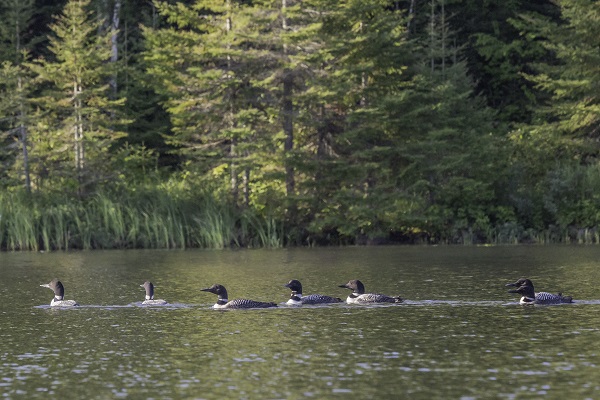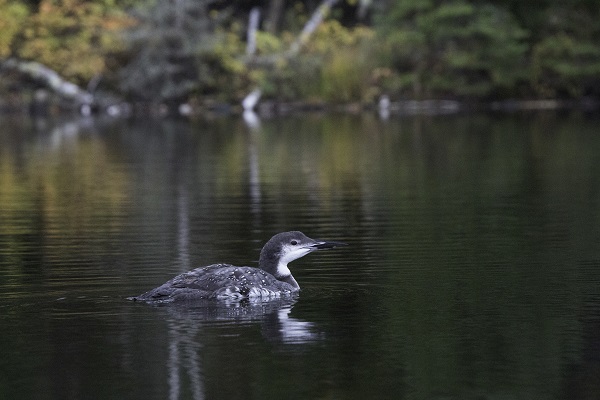By Chuck Dayton
The first Earth Day, 50 years ago, changed my life by catapulting me into a career as a public interest environmental lawyer. Working first for a student group and then for the North Star Chapter, I threw myself into the struggle to save the BWCAW from ongoing logging and widespread motorboat use, both of which violated the very spirit of a wilderness. At the same time, with Sierra Club support, my partner John Herman and I lobbied through many of Minnesota’s fundamental environmental laws in the 1970s.
My ties to the north county go back to high school canoe trips, followed by guiding from my family’s canoe outfitting base on a small lake east of Ely. I have spent some part of 63 summers there, and in retirement I now have the joy of being there all summer.
Sara and I, and my now-retired brothers and wives, our children and grandchildren, share the family compound. It’s the glue that holds our far-flung extended family together. Jasper Lake always has a nesting pair of loons. In recent years, following their progress from nesting to flight and migration has become the focal point of my passion for photography. We follow them closely, inhaling their long low wails, reporting the progress of the chicks, sharing our fears that an eagle, turtle or Northern ate them, and our heartfelt relief when they reappear.
After a couple of years and hundreds of loon photos, I began to think, what can I do with all of these images of these wonderful creatures?

So, I decided to pull together a photo collection showing the growth and development of loon chicks and to write a children’s story to go with it. I had help from a local Ely artist and writer, Consie Powell, who suffered through several revisions.
When I submitted Secrets of the Loon to the Minnesota Historical Society Press, they loved the photos, but said that my text was too complex for their target audience of 3-7 year olds. Fortunately, the publisher, Shannon Pennefeather, knew of a great children's author, Laura Purdie Salas, who had published 125 children’s nature books. Laura rewrote the story in beautiful poetry suitable for younger kids.
The book follows a chick from inside the egg until it matures, while learning the loon "secrets” of diving, avoiding predators, catching, killing and eating fish, and finally, flying. Secrets of the Loon has some subtle messages for kids about learning new skills, about living with danger (like eagles and turtles) and achieving total independence. We were careful to check our facts with scientific experts, and MHS Press encouraged me to explain more of the biology and life cycles of loons in several pages of back matter for older children and adult readers.

Unfortunately, Minnesota loons are threatened by lead fishing tackle and the lead shot they ingest like small stones to aid digestion. Eating lead kills them. Moreover, climate change could chase them out of Minnesota. Warmer water will diminish their usual food supply and rising water levels will leave fewer marshy nesting areas. Spring heat waves will stress the chick and slow the parents feeding.
Loons are luckier than some species because they can go further north. But If loons leave, Minnesota lakes will never be the same. Currently, loons’ range extends from northern Alaska to southern Minnesota, all the way to the Iowa border. With an increase of 2 degrees centigrade, most of that range in our state disappears, and only a diminished sliver is left in the Northeast corner. With a 3 degree increase, they are gone totally from our state.
It doesn’t have to be that way. If we can limit global temperature increase to 1.5 degrees C, loon habitat will be diminished but not destroyed, at least in the northern half of the state.
As I head into my 9th decade, and an uncertain political future, my fervent hope is that by the time I finish this adventure and have taken my last portage, we will have solved this climate problem, and that the almost vertical curve of CO2 and other global warming emissions since the 1950’s will level out and head downwards. I hope the book helps.
Secrets of the Loon is launching via Facebook premiere on Monday May 4 at 3:00 pm on the Minnesota Historical Society's Facebook page. Tune into a story for young readers illustrating the sights, sounds, and survival strategies of Minnesota’s state bird.